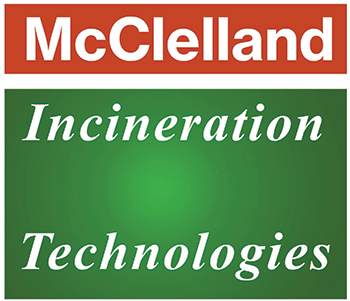- January 18, 2024
- by Chirag
- Mc Clelland
In today’s world, where industrialization and technological advancements drive our economies forward, the management of hazardous waste has become a critical issue. Among the various methods used for disposal and treatment, incineration stands out as a controversial yet commonly employed technique. Hazardous waste facility incinerators, in particular, play a pivotal role in managing and reducing the environmental impact of hazardous substances.
What is a Hazardous Waste Facility Incinerator?
For more information and studying further on incineration or incinerator supplier India or Industrial incinerator supplier India, visit www.mcclellandindia.com. It is located in Mumbai, Maharashtra, India with projects in all states of india – Gujarat, Maharastra etc. and all over the world.
A hazardous waste facility incinerator is a specialized facility designed to safely burn hazardous wastes at very high temperatures. These facilities are equipped with advanced technology to ensure the efficient combustion of hazardous materials, minimizing their volume and reducing their toxicity.
How Do Hazardous Waste Facility Incinerators Work?
- Feed Preparation: Before incineration, hazardous wastes are carefully categorized and prepared for combustion. This may involve shredding, mixing, or blending to achieve optimal conditions for burning.
- Combustion: The wastes are fed into the incinerator where they are subjected to extremely high temperatures, often exceeding 1000 degrees Celsius. This thermal treatment breaks down complex organic molecules into simpler, less harmful substances.
- Air Pollution Control: To mitigate the environmental impact, advanced air pollution control systems are employed. These include scrubbers, filters, and catalytic converters that capture particulates, heavy metals, and other pollutants released during combustion.
- Residue Handling: After combustion, the remaining ash and residues undergo further treatment. Metals and other valuable materials may be recovered, while inert residues are disposed of in accordance with regulatory guidelines.
Environmental and Health Concerns
Despite its benefits, hazardous waste incineration raises significant environmental and health concerns:
- Air Emissions: Incineration releases pollutants such as dioxins, furans, and heavy metals into the atmosphere, albeit at levels tightly controlled by regulatory standards.
- Residue Management: Ash and residues from incineration may contain concentrated toxins that require careful handling to prevent environmental contamination.
- Community Impact: Proximity to incineration facilities can raise concerns among local communities regarding air quality, health risks, and environmental justice.
Regulatory Oversight and Safety Measures
Governments impose stringent regulations and monitoring protocols to ensure the safe operation of hazardous waste facility incinerators. These measures typically include emission limits, continuous monitoring of air quality, and periodic inspections to verify compliance with environmental standards.
The Future of Hazardous Waste Management
As global awareness of environmental issues grows, there is increasing emphasis on sustainable waste management practices. While incineration remains a critical tool for hazardous waste disposal, there is also a push towards reducing waste generation, recycling valuable materials, and exploring alternative treatment technologies such as thermal depolymerization and plasma arc gasification.
Conclusion
Hazardous waste facility incinerators play a vital role in managing hazardous materials, offering an efficient means of reducing the volume and toxicity of waste. However, their operation must be carefully regulated and monitored to minimize environmental and health impacts. As technology advances and environmental awareness evolves, the future of hazardous waste management will likely see a continued emphasis on innovation and sustainability.
In our journey towards a cleaner and safer environment, understanding the complexities and challenges of hazardous waste incineration is crucial. By balancing technological advancements with rigorous environmental stewardship, we can ensure that hazardous waste management practices contribute positively to our collective well-being and the health of our planet.





